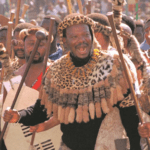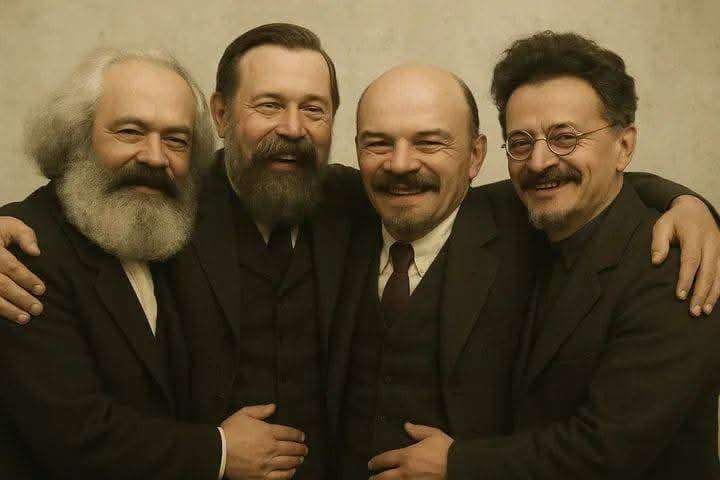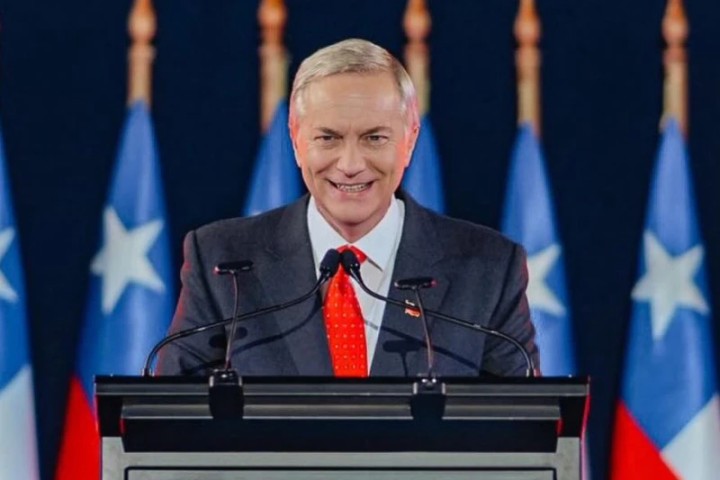Mondli Makhanya
Modern South African history has seen its fair share of evil men and women, many of them linked in one way or another with the apartheid system and the security apparatus that upheld it.
There were people such as DF Malan and Hendrik Verwoerd, the architects and foundation-layers of the apartheid system. In later years, there were the likes of BJ Vorster and PW Botha, who took apartheid to another level and designed dark security that formed the shield for apartheid.
There were hard men such as Louis le Grange, Adriaan Vlok and Magnus Malan, who built and nurtured the killing squads that acted with absolute impunity and with the sanction of the highest levels of government.
Then there were the generals in the army, police and intelligence, who hired the men and women who carried out dastardly deeds that you could not believe were executed by human beings.
Lower down, there were the foot soldiers such as Eugene de Kock, who carried out the orders with glee.
Most of the people acted out of conviction that they were serving the interests of the volk and the God that Afrikaners worship.
They were the custodians of Western civilisation on this dark continent. But, as in the slave trade days, there were the black enablers who sold out their people for personal gain and individual power.
You could find them in the Bantustan governments, the puppet township councils, the Security Branch and among the askari turncoats. And as is always the case, the collaborators often went much further than the master could ever have expected.
Undoubtedly, the most enthusiastic and most effective of these apartheid collaborators was one Mangosuthu Gatsha Buthelezi, who died yesterday, aged 95. If those who put up Buthelezi’s tombstone were to be honest it would read:
“Chief apartheid collaborator and mass murderer.” Those who write the obituary to be read at his funeral would acknowledge the tens of thousands of people who were killed, maimed, displaced and had their properties destroyed by his impis and hit squads. Those who stand up to pay tribute at his memorial service would mention the names Boipatong, KwaMakhutha, Swanieville, Shobashobane, Thokoza and so many other scenes of mass murders that were committed in his name. In the coming days of the so-called mourning period, they should remember those who were mercilessly slaughtered on train coaches from where they could not escape.
REWRITING HISTORY
Yesterday, following his death, there was a torrent of lies about the legacy of a man who must count as one of the most evil people to have trod the soul of our nation.
Buthelezi was being lauded as a great man, nation-builder and contributor to the democratic republic that we live in. President Cyril Ramaphosa described him as “a formidable leader in the political and cultural life of our nation” and pledged that the country would “reflect more extensively on his extraordinary life and diverse contribution to the development of our nation”.
National Assembly Speaker Nosiviwe Mapisa-Nqakula called Buthelezi “a towering figure in our nation’s history”. She praised Buthelezi for his “legislative and political leadership experience, having led a political party both during the apartheid era and in post-apartheid South Africa”.
There were many more dishonest tributes from the ANC, other political parties and even some organs of civil society and faith-based organisations.
In the past 24 hours, we have witnessed the culmination of the greatest whitewashing of history that South Africa has seen, a process that began some years ago.
TRUTH ABOUT GATSHA BUTHELEZI
So who is this Buthelezi and why is everybody so afraid to tell the truth about him?
The facts are that Buthelezi used the role that he built for himself as the traditional prime minister to the Zulu kingdom to cultivate a personality cult around himself and amass massive power.
He tightly controlled a young and dimwit King Goodwill Zwelithini to build what was initially a cultural movement called Inkatha, which then evolved into a political force.
The driver behind this was the assertion of Zulu nationalism and the evoking of the nostalgia for the kingdom that fought heroic battles against colonialists before succumbing in 1879.
This is a nostalgia that runs deep among many Zulu people and Buthelezi was able to commodify it and turn it into a political weapon.
Everyone knows how potent and dangerous a weapon nationalist jingoism can be. Buthelezi tapped into this.
In KwaZulu schools, children were subjected to Inkatha lessons in which Buthelezi was placed at the centre of the restoration of the Zulu kingdom.
Young people would be sent to the Mandleni-Matleng camp outside Ulundi for further indoctrination and turned into IFP zombies. Traditional structures such as chiefdoms and the induna system in the hostels were purposed as Inkatha conveyor belts.
The youthful zombies, together with regiments in the traditional areas and hostels, would later become the fighting forces that Inkatha used to crush anti-apartheid forces on behalf of the apartheid government.
Inkatha’s violent war against the people began in the 1970s and 1980s when Buthelezi dispatched his warriors to help the apartheid government crush student protests.
When the nationwide uprising against apartheid intensified in the mid-1980s, the regime leant on its trusted surrogate to help it contain them or put them down. Inkatha gladly complied and regiments conducted terror campaigns against members and supporters of the United Democratic Front and its allies.
The apartheid government even helped Inkatha to form the United Workers Union of SA to counter the growing power of Cosatu.
Fast-forward to the unbanning of the organisations and release of political prisoners such as Nelson Mandela.
With negotiations for a democratic South Africa in full force, right-wing elements in FW De Klerk’s government and security forces unleashed more bloodshed on South Africans, working hand in hand with Buthelezi’s now rebranded Inkatha Freedom Party (IFP) as well as state-backed criminal gangs that had been turned into the government’s killing machines.
The carnage of those times was raw: people butchered in broad daylight, babies stabbed with spears while in bed with their mothers because “a baby snake will eventually grow up into a big snake”, and weddings attacked by marauding impis.
As a young reporter at the time, this lowly newspaperman would more than once weekly be on the scene of yet another killing field as we journalists became accustomed to those middle of the night calls and pager alerts telling of yet another mass killing by Inkatha warriors.
The Inkatha warriors would be marching around the hostel yard or on the perimeter, triumphantly singing traditional songs, celebrating their killing spree. They would tell us that they were killing the enemies of the Zulus because Inkatha had told them the ANC wanted to destroy the Zulu kingdom and strip the king of his powers.
The sight of severed limbs, heads separated from the torsos, and congealed blood thick on the floors of homes and streets still haunts to this day. The images of the blood that would be splattered on train windows after a train attack and bodies of those who jumped out and died still lingers. As does the wailing of family members, including orphaned children, at the numerous funerals of innocents who were killed by Inkatha impis simply because the apartheid regime and Buthelezi wanted to sow terror.
Today, if you go to communities in the Vaal, the KwaZulu-Natal Midlands, Ekurhuleni, Soweto, Kagiso, Clermont, Magabheni and many rural villages, the residents will have vivid memories of what Buthelezi did to them, their loved ones and their communities.
DEMOCRACY SPOILER
As the democracy talks commenced, Buthelezi was playing spoiler, aligning himself with far-right Afrikaner groups and other stubborn Bantustan parties to derail the negotiations. Because his party and the Afrikaans conservatives had the capacity to cause chaos, the main negotiation had to sit up and take them seriously.
For all the talk that Buthelezi helped the country’s transition to democracy, it cannot be forgotten that the IFP held the nation to ransom in the run-up to the 1994 elections and entered the polls at the absolutely last minute. He was to continue his obstinate ways even after democracy when he was a serving minister in the Government of National Unity (GNU).
Many a time he would throw tantrums and threaten to pull the IFP out of the GNU and the Constitutional Assembly that was drafting the final Constitution.
Carefully couched in his threats was that he could not predict what his supporters would do if the IFP was excluded.
Yesterday, ANC national spokesperson Mahlengi Bhengu-Motsiri told the nation that Buthelezi had a “multifaceted relationship with the ANC and the nation, and his legacy will be subjected to intense debate”.
Well, that “intense debate” should have been settled by the unequivocal findings of the Truth and Reconciliation Commission (TRC), which made damning findings against the IFP and Buthelezi.
One of these related to Buthelezi’s request for the SA Defence Force (SADF) to bolster him with training offensive units (basically hit squads), in his capacity as KwaZulu chief minister who was also in charge of the Bantustan police, to deal with his opponents. These resulted in the training of hit squads in the Caprivi Strip (then part of South West Africa).
Those men went on to do some deadly killings. According to a document of the SADF’s directorate of special tasks that the TRC obtained, his right-hand man MZ Khumalo said Buthelezi wanted help to train “cells that could take out undesirable members”.
“The training of the offensive group of Inkatha’s para-military unit in the Caprivi Strip during 1986 accords fully with the meaning of offensive action … According to former military intelligence officer, Lieutenant-Colonel J A Nieuwoudt, who was involved in the training of the para-military unit, the aim of the offensive group was to attack and eliminate ANC targets,” the TRC said in papers answering Buthelezi’s bid to set its findings aside.
It was a comprehensive answering document that laid out the IFP’s hand-in-glove relationship with the apartheid security establishment. Buthelezi promptly walked away and the case that would have proved his complicity was never heard.
There is nothing “formidable” about a cold-blooded killer who created orphans, destroyed communities and did the utmost to delay our democracy. There is no ambiguity about Buthelezi’s role in aiding and abetting the apartheid regime. There is nothing “towering” about a man who is responsible for more than 20 000 deaths in a war that only benefited the regime.
Buthelezi never acknowledged his role in propping up apartheid through violent means and his role in the slaughter of innocents. He spent his last years trying to convince the world that he had always been a man of peace, right up there with Nelson Mandela, Martin Luther King and Mahatma Gandhi.
In the next few days, Ramaphosa will announce how the mass killer will be honoured by the democratic republic he spilt blood to prevent the birth of.
There will be the usual bells and whistles that come with such occasions. Lies will be told about a man who was one of the midwives of the new South Africa.
But it is okay. It is in the nature of politicians to tell bare-faced lies. But we will owe it to ourselves as South Africans not to forget that Buthelezi was a thoroughly evil man to the end, and history must record that.
https://www.news24.com/citypress/news/truth-of-buthelezis-murder-legacy-20230910
![]()




